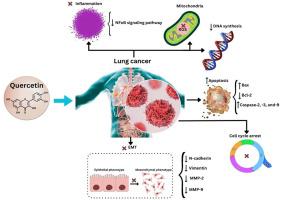当前位置:
X-MOL 学术
›
Anal. Chim. Acta
›
论文详情
Our official English website, www.x-mol.net, welcomes your feedback! (Note: you will need to create a separate account there.)
DNA sensing based on aggregation of Janus particles using dynamic light scattering
Analytica Chimica Acta ( IF 5.7 ) Pub Date : 2024-07-01 , DOI: 10.1016/j.aca.2024.342933 Akihisa Miyagawa , Chisa Ito , Yasuyuki Ueda , Shigenori Nagatomo , Kiyoharu Nakatani
Analytica Chimica Acta ( IF 5.7 ) Pub Date : 2024-07-01 , DOI: 10.1016/j.aca.2024.342933 Akihisa Miyagawa , Chisa Ito , Yasuyuki Ueda , Shigenori Nagatomo , Kiyoharu Nakatani

|
The aggregation of isotropic particles through interparticle reactions poses a challenge in control due to the ability of all surfaces to bind to each other, rendering the quantitative detection of such interparticle reactions based on particle size difficult. Here, we proposed a novel detection scheme for DNA utilizing an assembly of Janus particles (JPs) employing dynamic light scattering (DLS). DNA molecules are tethered on one hemisphere of the JP, while the other hemisphere retains its hydrophobic properties. Aggregation of JPs was induced by the sandwich hybridization of target DNA between them. The assembly of JPs was effectively monitored by the changes in hydrodynamic diameter detected by DLS, revealing that aggregation peaks at 2–3 particles and further reaction was hindered due to the inability of one hemisphere of the JP to interact with another JP. The target DNA demonstrated detectability at concentrations as low as several tens of pM to several nM using a digital sensing method. The two types of target DNA, such as simple (14 base pairs) and HIV-2 specific sequences (20 base pairs) were detectable at nM and pM levels, respectively. Moreover, we substantiated the robustness of our detection scheme through stoichiometric calculations based on an equilibrium model. The present detection mechanism was well explained based on the binding affinity of DNA hybridization. This detection method harnesses the anisotropic nature of JPs and represents the first detection approach based on aggregation. By altering the modification molecules on JPs to match target molecules, such as proteins and organic compounds, a wide range of versatile molecules can be detected using this scheme with high sensitivity. This underscores the broad applicability of the present method.
中文翻译:

基于使用动态光散射的 Janus 粒子聚集的 DNA 传感
由于所有表面都具有相互结合的能力,通过颗粒间反应进行各向同性颗粒的聚集对控制提出了挑战,使得基于颗粒尺寸的这种颗粒间反应的定量检测变得困难。在这里,我们提出了一种利用动态光散射 (DLS) 组装 Janus 粒子 (JP) 的 DNA 检测方案。 DNA 分子被束缚在 JP 的一个半球上,而另一个半球则保留其疏水特性。 JPs 的聚集是由它们之间的靶 DNA 夹心杂交诱导的。通过 DLS 检测到的流体动力学直径的变化有效地监测了 JP 的组装,揭示了由于 JP 的一个半球无法与另一个 JP 相互作用,在 2-3 个颗粒处出现聚集峰,并且进一步的反应受到阻碍。使用数字传感方法,目标 DNA 在低至数十 pM 至数 nM 的浓度下具有可检测性。两种类型的靶 DNA,例如简单序列(14 个碱基对)和 HIV-2 特异性序列(20 个碱基对),分别可在 nM 和 pM 水平上检测到。此外,我们通过基于平衡模型的化学计量计算证实了我们的检测方案的稳健性。基于DNA杂交的结合亲和力很好地解释了目前的检测机制。该检测方法利用了 JP 的各向异性性质,代表了第一种基于聚合的检测方法。通过改变 JP 上的修饰分子以匹配目标分子,例如蛋白质和有机化合物,可以使用该方案以高灵敏度检测各种多功能分子。这强调了本方法的广泛适用性。
更新日期:2024-07-01
中文翻译:

基于使用动态光散射的 Janus 粒子聚集的 DNA 传感
由于所有表面都具有相互结合的能力,通过颗粒间反应进行各向同性颗粒的聚集对控制提出了挑战,使得基于颗粒尺寸的这种颗粒间反应的定量检测变得困难。在这里,我们提出了一种利用动态光散射 (DLS) 组装 Janus 粒子 (JP) 的 DNA 检测方案。 DNA 分子被束缚在 JP 的一个半球上,而另一个半球则保留其疏水特性。 JPs 的聚集是由它们之间的靶 DNA 夹心杂交诱导的。通过 DLS 检测到的流体动力学直径的变化有效地监测了 JP 的组装,揭示了由于 JP 的一个半球无法与另一个 JP 相互作用,在 2-3 个颗粒处出现聚集峰,并且进一步的反应受到阻碍。使用数字传感方法,目标 DNA 在低至数十 pM 至数 nM 的浓度下具有可检测性。两种类型的靶 DNA,例如简单序列(14 个碱基对)和 HIV-2 特异性序列(20 个碱基对),分别可在 nM 和 pM 水平上检测到。此外,我们通过基于平衡模型的化学计量计算证实了我们的检测方案的稳健性。基于DNA杂交的结合亲和力很好地解释了目前的检测机制。该检测方法利用了 JP 的各向异性性质,代表了第一种基于聚合的检测方法。通过改变 JP 上的修饰分子以匹配目标分子,例如蛋白质和有机化合物,可以使用该方案以高灵敏度检测各种多功能分子。这强调了本方法的广泛适用性。









































 京公网安备 11010802027423号
京公网安备 11010802027423号